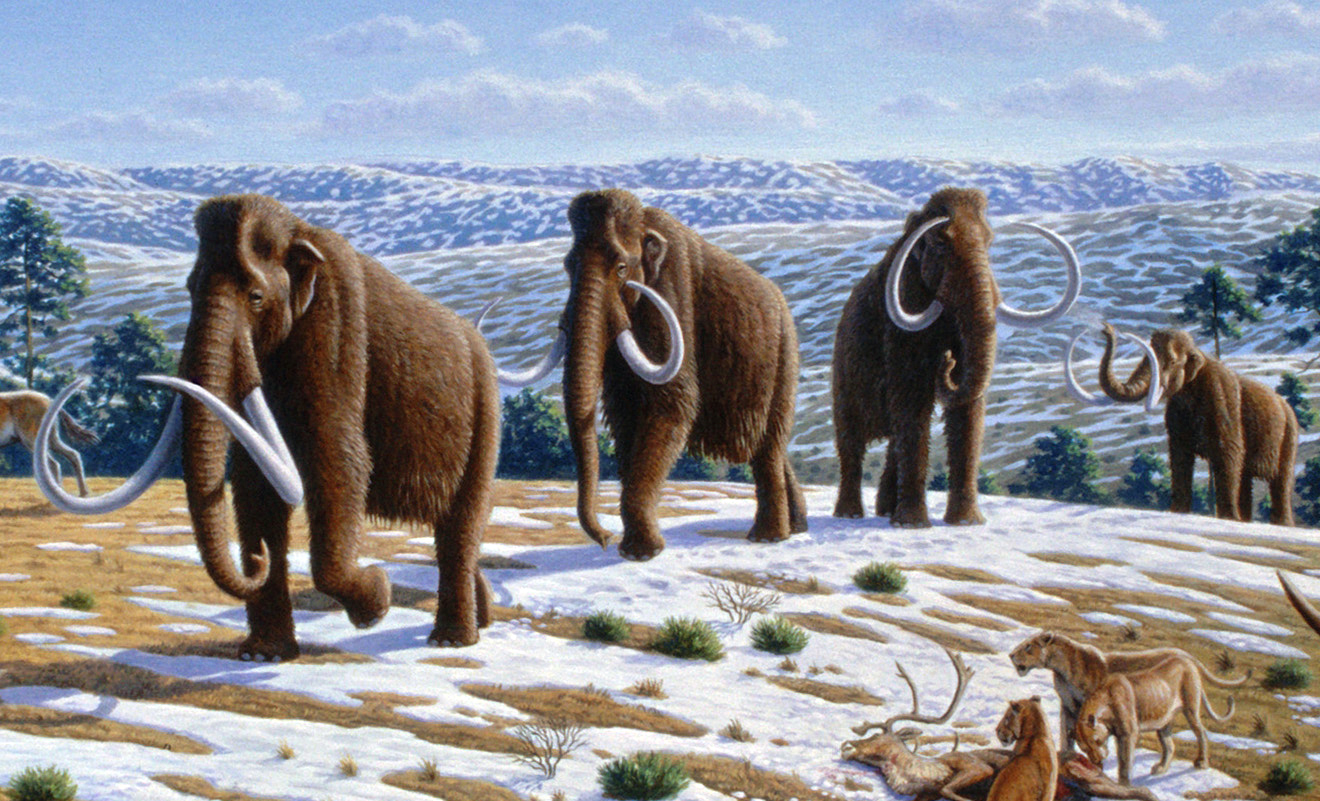Woolly mammoths were massive, hairy elephants that roamed the earth during the ice age. They were adapted to live in cold, grassy plains of the northern hemisphere and were well adapted to the harsh conditions of the ice age. They stood over 10 feet tall, weighed up to 6 tons, and had fur up to 3 feet long. Mammoths were social animals that lived in herds of up to 100 individuals and communicated through a variety of sounds. Although mammoths are extinct, they continue to fascinate scientists and the public, and there are ongoing efforts to revive the species through genetic engineering.

Woolly mammoths FACTS
Physical Characteristics
Woolly mammoths were massive creatures, weighing up to 6 tons and standing over 10 feet tall. Their fur was up to 3 feet long and could be various shades of brown.
Behavior
Mammoths were social animals that lived in herds of up to 100 individuals. They communicated through a variety of sounds, including trumpets, grunts, and bellows.
Extinction
There are several theories about why Woolly mammoths went extinct, including climate change, human hunting, and disease. The exact cause is still debated by scientists.
Revival Efforts
Scientists are currently attempting to resurrect the woolly mammoth through genetic engineering. The process involves splicing mammoth DNA into the cells of a closely related species, such as elephants.
Cultural Significance
Woolly mammoths have played an important role in human culture for millennia. They appear in cave paintings, mythologies, and even modern popular media.
Habitat
Woolly mammoths lived in a variety of environments, from the frozen tundra of the Arctic to the grasslands of temperate regions. They were adapted to survive in cold climates, with a thick coat and layers of fat for insulation.
Fossils
Fossils of woolly mammoths have been found all over the world, preserved in ice, mud, and tar pits. These fossils have provided valuable information about the anatomy and biology of the species.
Conservation
Although Woolly mammoths are extinct, their modern-day relatives, elephants, face threats from habitat loss, poaching, and climate change. Conservation efforts are underway to protect and preserve elephant populations around the world.
Other Prehistoric Creatures
Woolly mammoths were not the only impressive creatures of the prehistoric world. Other giants included sabre-toothed cats, giant sloths, and the iconic Tyrannosaurus rex.
causes of extinction
There are several theories about why mammoths went extinct, including climate change, overhunting, and disease. Some scientists suggest that a combination of these factors contributed to their demise.
Climate Change
The warming of the planet and the melting of ice sheets led to the loss of their habitat and food sources.
Human Hunting
As humans spread across the globe, they hunted mammoths for food, clothing, and other resources.
Disease
Woolly Mammoths may have been susceptible to diseases carried by humans and other animals.
Genetic Factors
The slow reproductive rate of mammoths and low genetic diversity may have made them more vulnerable to environmental changes and diseases.
Competition with Other Species
As other species, such as horses and bison, expanded their range, they may have competed with mammoths for resources, further reducing their chances of survival.
REVIVAL OF WOOLLY MAMMOTHS
Genetic Engineering
Scientists are attempting to revive the woolly mammoth through genetic engineering.
Splicing DNA
The process involves splicing mammoth DNA into the cells of a closely related species, such as elephants.
Creating Hybrids
The goal is to create a hybrid that exhibits traits of both species, such as the thick fur of the mammoth and the resistance to cold weather of the elephant.
Challenges
However, there are several challenges to overcome, such as ethical concerns, technical difficulties, and the need for suitable habitats.
Future Prospects
The future prospects of reviving woolly mammoths are still uncertain, but it remains an exciting area of research.
In conclusion, the woolly mammoth was an impressive and fascinating creature that once roamed the earth. Although it is now extinct, ongoing efforts to revive the species through genetic engineering offer a glimmer of hope for its future.